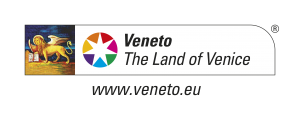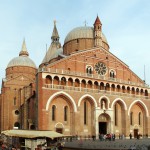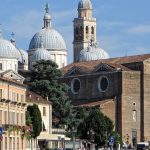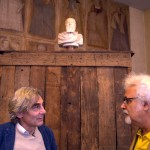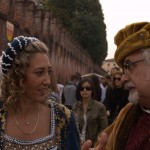Beauties of Veneto Region
Padua: The Scrovegni Chapel
One of the jewels of Italian art, by Giotto
Full text video: Padua: The Scrovegni Chapel
The slow tour of Padua starts here: The Scrovegni Chapel is one of the jewels of Italian art. It is here that I had the sensation of being a silly man, in as much as I live 100 kilometres from Padua and I have never been here before! What I felt when I entered was similar to what I experienced when I saw the Sistine Chapel for the first time, but the sort of faith that jumps out here is more transparent. Here the same religious type of prejudice that 300 years later was to persecute Galileo, proved beneficial then. The date was 6 February, 1300 and Enrico Scrovegni was a very rich banker. But bankers, in those days, had a very poor reputation. Dante, in his literary Inferno, placed them on a par with usurers. Enrico wanted to make amends in some way: he had gained so many riches but he had to prove that he could do some good. He bought this piece of land that was once used for pagan rituals, and wanted to build a chapel on it, with a church that would be dedicated to the blessed Virgin Mary. He summoned the greatest artist of his time: Giotto, who created this marvel in the early 14th century. An absolute masterpiece. Things then started going wrong for Enrico. He had a dispute with Padua and went to live in Venice, only returning to Padua after his death. Because in addition to completing his good work here in order not to be seen as a loan shark, he also wanted his tomb to be here. The chapel was intended to celebrate his family. And now it is possible for all of us to enjoy this work of pure beauty. I can’t really explain all of it, but here are just some of the most significant things: the man who offers the chapel to Our Blessed Lady is Enrico Scrovegni. The one in white who is holding up the gift is Giotto’s theologian adviser, who was there to ensure that all these scenes were in keeping with religion. People couldn’t read then, but they understood and took in the frescoes’ sacred scenes. On the right there is a portrayal of hell. Reginaldo Scrovegni is there with his hands tied behind his back and a little red hat on his head. He is Enrico’s father, whom Dante placed in the XVII Canto of his Inferno, because he was considered a miser and a usury. Giotto placed him there despite his client! This was perhaps the first ever depiction of Inferno, and originates from a Dantean vision. Enrico may have been the client but he had his father placed in Inferno nevertheless, this was the reason for his atonement. The most interesting thing of all is the plaster that was left intact by the preservative restorations completed in 2004. All the colours here are the originals, and even where the plaster was peeling away, they only made it a little grey. The area damaged by time is very small, the colours are vivid, which is incredible given they are over 700 years old! It looks as though it was painted yesterday…
Produced in cooperation with the Official Tourist Board
Visit Padua: helpful hints
Italian name: PadovaArrival
Padua doesn’t have an airport. The nearest airport for international flights is the Venice Airport, but there is a bus leading directly to Padua (rides every hour, 8,5€). For transcontinental flights the nearest airport is the Bologna Airport. From the airport, first you have to reach Bologna Central Station by bus (rides every 15 minutes, it takes 30 minuts, 6€). From Bologna Central Station, both Trenitalia and Italo trains reach Padua in 50 minutes (ticket 10€, more or less).
Transports
You can visit Padua on foot or by bus. Single ticket costs 1,3€ and it lasts 75 minutes, more on FBus website.What to do
Padua is a stunning art city in Veneto region, close to Venice and Verona, in North Eastern Italy. It is famous for several art masterpiece that you simply must visit: start with the Giotto’s Scrovegni Chapel and Saint’s Anthony church. The University of Padua is one of the oldest and most important in Italy and in the whole Europe, here taught none other than Galileo Galilei and you can still visit its original Podium.
For a special break, look for the historic Caffè Pedrocchi and ask for their fine special caffè (a long espresso coffee with fresh mint cream and chocolate powder).
For more tips, watch the whole web serie we made about Padua and if you are fond of SPA tourism (or you just need some relaxing quality time) consider to spend some time on the Colli Euganei area, nearby. Pick one of the several SPA resort and enjoy the Roman baths and muds (try Abano Terme or Montegrotto Terme). From Padua, you can also reach easily many other interesting places, take a look to this itinerary through the amazing Palladian Villas of Veneto.

